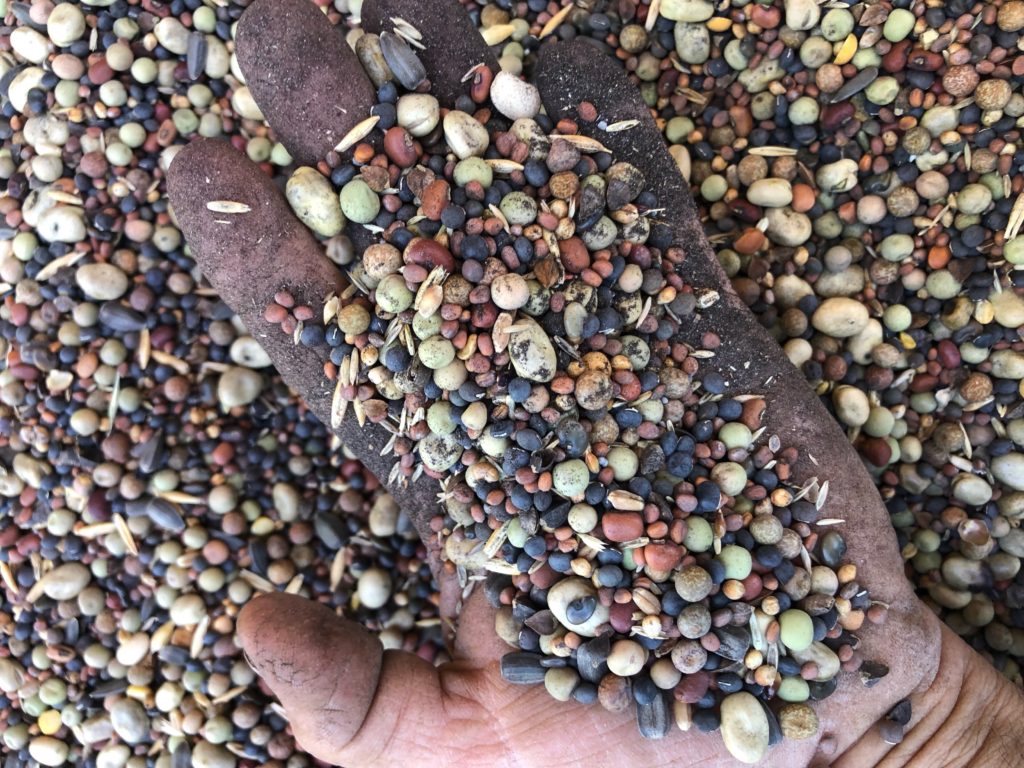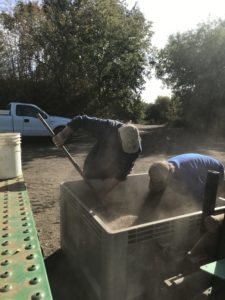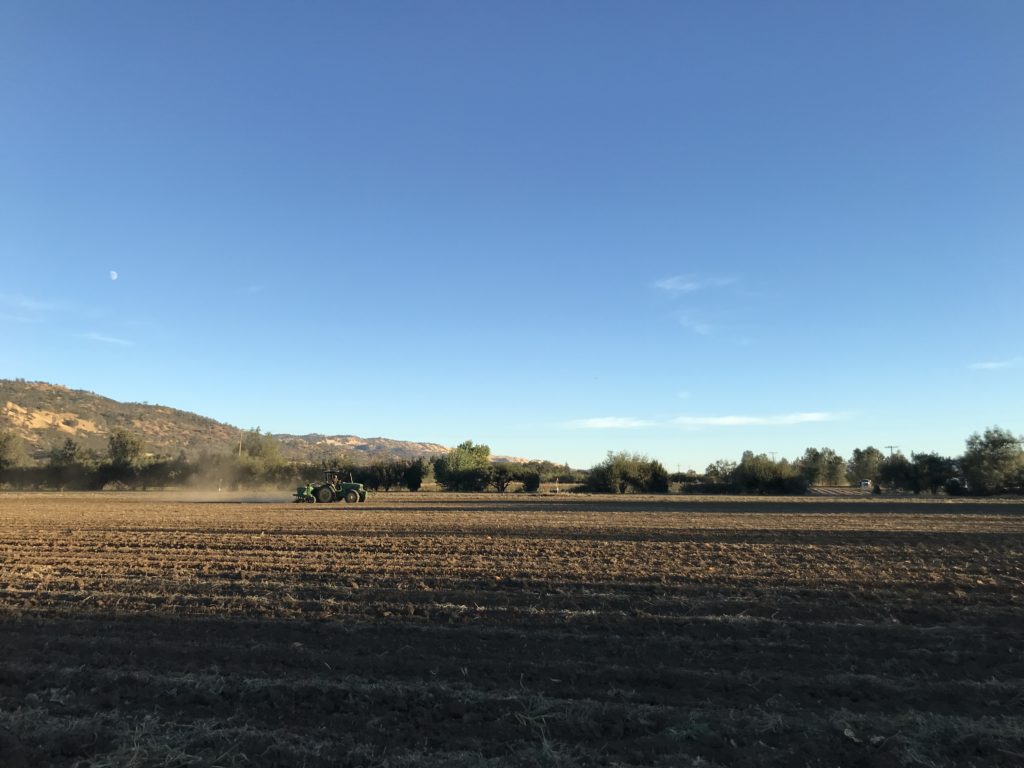
What’s Andrew holding in this picture? It’s not trail mix – it’s cover crop seed!
This past week, planting cover crops was a high priority. It’s a normal fall activity, but when there’s rain in the forecast, it takes on an increased sense of urgency; if we get a significant amount of rain, we won’t be able to get into the fields with a tractor for a while, and we also want the seeds to get as much irrigation from rain as they can.
A cover crop isn’t any particular plant but is the umbrella term for plants that you grow for the soil, not to harvest (and remove from the land). A cover crop, as the name suggest, covers the soil between cash crops, and also is planted to and improve soil health, both in the short and long term. In the short term, the cover crop will hold soil in place and increase water infiltration during potential storms. The fields of cover crops will grow all winter and spring, providing food and habitat for beneficial insects. In spring, when we need to start prepping the fields for summer’s bounty, we’ll mow the cover crops, or have the sheep “mow” them for us. It adds a lot of biomass (5 tons per acre!) to the soil, increasing the organic material and nutrients available in the soil for future crops and for microorganisms that support healthy soil and crops.
Cover crops are a long term investment; the benefits are spread over years as organic matter slowly breaks down and nutrients become available to plants. They’re a core practice for organic farmers, who can’t use synthetic fertilizers to provide nutrients immediately to their plants (though there are some certified organic fertilizers). But they are a good practice for all farmers who are interested in soil health (which should be everyone!) and they have been getting more attention on them in recent years for their benefits for soil health and their potential role in climate change mitigation via carbon sequestration. California has the Healthy Soils Program to encourage farmers to plant cover crops, there are other state and federal incentive programs (like EQIP, the Environmental Quality Incentives Program), and increasingly private companies are incentivizing their use too. There’s a lot we do know about soil and the soil microbiome and the benefits of cover crops, but scientists are learning more every year.

Like everything at the farm, we’ve strategically incorporated diversity into our cover crop mix. Commercial cover crop mixes include a blend of seeds, and we mix a few more things into it. Each type of seed is chosen with a specific goal: we include legumes (vetch, peas, and fava beans, also called bell beans) that will fix nitrogen, tillage radish to help break up the soil, clover (another nitrogen fixer), mustards (which can act as a biofumigant and reduce soil borne pathogens), and oats (cereals/grasses add carbon). We also sprinkle some inoculant on the final blend before loading up the grain drill to help the legumes germinate and fix nitrogen. So in a way, it is a bit like trail mix, or granola, both in how we mix it and the purpose that it serves – it provides a tasty mix to the soil microorganisms to keep them going strong.


Cover crops aren’t something we can sell and share with our community directly, but growing them is very important to us and about half of our acreage of row crop fields will be in cover crop during the winter. You’ll never see the cover crops in a CSA box or on farmers market table, but every bite of produce that you do enjoy is due in part to the cover crop that preceded it in the field. So hopefully it’s a good cover crop year and we get enough rain to have lush, green fields very soon.
– Elaine Swiedler, CSA Manager

